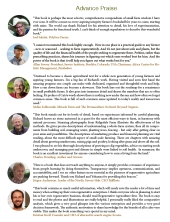 Source: Ridgedale Permaculture
Source: Ridgedale Permaculture
Publisher:
Ridgedale Permaculture
Summary
Making Small Farms Work follows the first seasons setting up what has quickly become one of Europe’s flagship farm scale Permaculture and regenerative agriculture sites. From a rural situation, nestled in the heart of Scandinavia, Ridgedale is a dedicated high-quality local food producer engaged in educating the next generation of agrarians with the design and management strategies to create farms for the future. The face of small-scale agriculture and the future of our food supply chain is changing. Pioneer educator and farmer Richard Perkins has dedicated his life to sharing effective solutions around the world, and this relatively remote farm has been receiving a lot of international interest as increasing numbers of people seek to participate in a regenerative economy. Covering every aspect of designing, installing and managing this diverse and productive farm, including the crucial decision-making processes and economics that make it all work, this book is full with hundreds of colour photographs, spreadsheets and details capturing the rapid development of the farm, with practical information on:
Holistic Decision MakingProperty SelectionGetting Started with Designing a PropertyUnderstanding Ecosystem ProcessesKeyline DesignWater SystemsTrees and Woody CropsDetailed Descriptions of Installing SystemsFencing on FarmsPastured Broiler Enterprise DetailsBuilding a Farm Slaughter FacilityPastured Eggs and Egg MobilesGrasslands & GrazingCreating a Market GardenTools and TipsFinancial Planning
Where to get it?
Out of Print
Related Videos
Related Threads
Kickstarter campaign thread
Related Websites
Ridgedale Permaculture
Richard Perkins website
 3
3





 2
2









